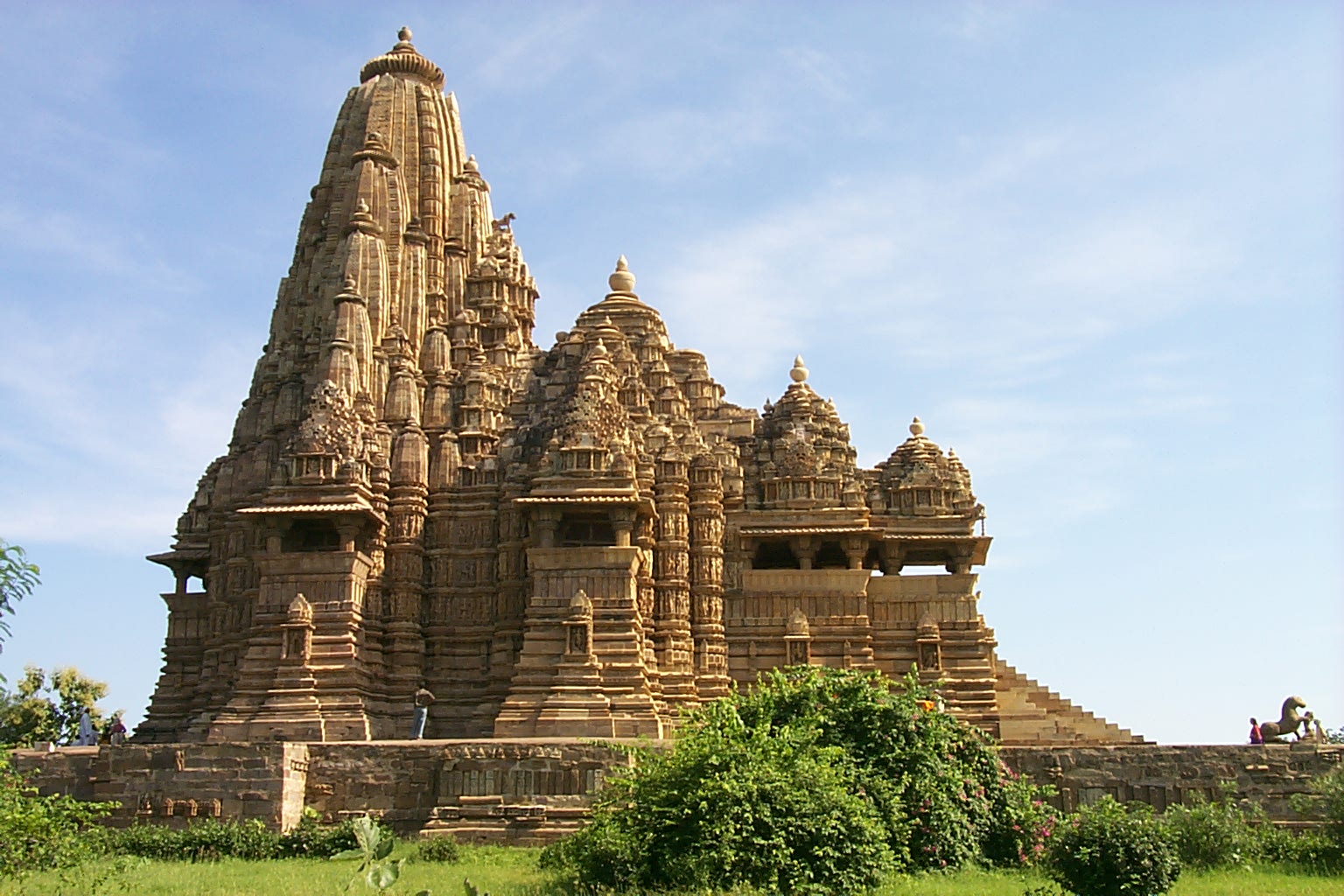Types of stone architecture
There are two types of stone architecture:
Rock cut. Rock-cut architecture is made by carving into natural rock. Usually hewn into the sides of mountain ridges, rockcut structures are made by excavating rock until the desired forms are achieved.
Stone built. The focus of this guidebook, stone-built architecture, on the other hand, involves assembling cut stone pieces to form a whole.
Buddhism gets the ball rolling
The first stone architecture in India was rock cut and executed by Buddhist monks; prior to these structures, all architecture had been made of wood. The most impressive examples were rock-cut religious sanctuaries, excavated directly out of the basalt mountains lining the western edge of the Deccan Plateau, the elevated, v-shaped landmass that comprises most of the Indian peninsula. The caves at Ajanta – as well as those at nearby Bedsa, Bhaja, Karla, Kondane, Nashik, and Pitalkhora – were part of this initial wave of excavations.
Inspiration for India’s rock architecture
Early Buddhist architecture was likely indirectly inspired by that of the Egyptians. The Egyptians were probably the first civilization in the world to construct stone architecture; they began with stone-built pyramids in the 27th century BCE (Djoser’s Step Pyramid in Saqqara) and continued with rock-cut tombs in the 16th century BCE (Valley of the Kings in Luxor).
At the same time, similar stone-built pyramids, called ziggurats, were being built not too far away in Mesopotamia (modern day Iran and Iraq); the earliest probably date from the late part of Sumeria’s Early Dynastic period (2900-2350 BCE). The ziggurat pyramid design, however, was never transformed from stepped to smooth edged, as was the case in Egypt.
Egyptian and Mesopotamian forms and building practices were borrowed by the Persians, who embraced rock-cut architecture. In fact, the royal tombs of Darius (522 BCE to 486 BCE) and the rest of the Old Persian (Achaemenid) Empire were rock cut; they are located just outside of the ancient city of Persepolis in modern-day Iran. Most likely drawing on Persian precedent, India’s earliest stone architects commenced building rock-cut architecture in the 3rd-2nd centuries BCE. These architects adapted Persian forms – infusing them with local design preferences derived from their existing wood-based architecture and introducing entirely new features to suit their unique religious practices – to create rock caves with an entirely new aesthetic.
Why were the Buddhists the first to build in stone?
It appears that the Buddhists just happened to have the support of rulers and rich merchants during the critical period in which Persian rock-cut architectural practices began to trickle into the subcontinent. Keep in mind, although the Buddhist faith was founded in India in the 6th century BCE, it did not gain widespread adoption until it received imperial sponsorship by the powerful Mauryan Emperor, Ashoka, who converted to Buddhism and ruled most of the Indian subcontinent from 269-232 BCE. The faith garnered subsequent momentum as a rising merchant class were attracted to Buddhism.



